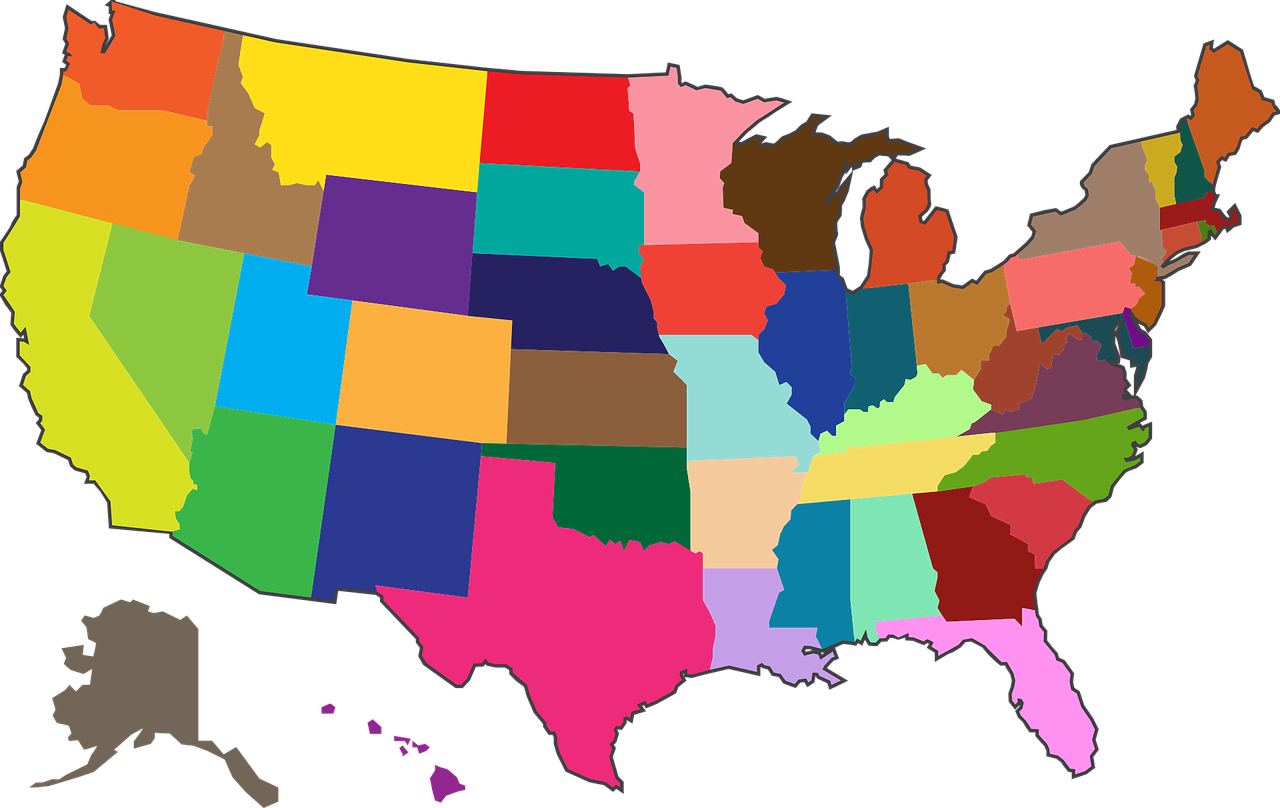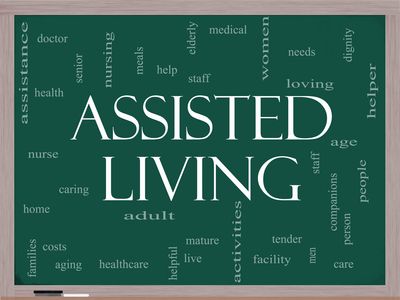Are Assisted Living Expenses Tax Deductible?
Are you or a loved one in assisted living? You may be eligible for tax deductions! Learn what qualifies for deductions, including medical expenses and the criteria you need to meet. Don't miss out on potential savings—discover if assisted living expenses can reduce your tax burden.

Introduction to Assisted Living Expenses and Tax Implications
Having a loved one who is elderly, disabled, or both can be a challenge to manage. One of the best ways to care for them is by looking into assisted living. Assisted living is a form of residential care which provides personal care services in a home-like setting. It also covers basic needs, such as meals, medications, and housekeeping.
While many people find that assisted living offers the best care for their loved ones, it can come with a hefty price tag. The good news is that it may be eligible for tax deductions in some cases. In this article, we’ll provide an overview of the tax implications associated with assisted living, including how certain expenses in an assisted living community, like medical care and personal assistance, may qualify for deductions under specific conditions outlined by the IRS.
What are Assisted Living Expenses?
Assisted living expenses are costs incurred from a resident’s stay in an assisted living facility. This includes a range of different services such as meals, laundry, housekeeping, transportation, and personal care assistance. Assisted living facilities provide elderly people with the necessary support they need to maintain their independence and remain living in their own home.
An assisted living facility can be an apartment complex, a nursing home, or an adult daycare center. It is important to note that not all assisted living facilities offer the same level of services or amenities. Some facilities may offer basic services while others offer more advanced care, such as medical and therapeutic services.
In order to qualify for assisted living expenses, an individual must meet certain criteria. Generally, individuals must be aged 60 or older, and have difficulty performing at least two activities of daily living (ADLs). ADLs include things like dressing and bathing, preparing meals, using the bathroom, and other basic daily activities. Additionally, some assisted living facilities may require an individual to be physically or cognitively impaired in order to qualify for services. To claim certain medical expenses on their tax returns, residents must be classified as chronically ill, requiring assistance with daily activities or supervision due to cognitive impairments.
In order to receive any sort of tax benefits from assisted living expenses, an individual must provide proof that they are meeting the eligibility criteria. This could include things like medical records, doctor’s reports, and other forms of proof. Additionally, it is important to note that assisted living expenses may not be deducted in all states.
Understanding Tax Deduction Eligibility for Assisted Living
Assisted living expenses, such as those incurred for residential homes and care facilities, can be deductible in certain cases. In order to take advantage of this, you must meet the criteria set forth by the Internal Revenue Service (IRS).
In general, assisted living expenses are considered a medical expense and can be deducted if the services for which you paid are primarily for the care and maintenance of an elderly or disabled person unable to live independently. This means that the expenses must be medically necessary and qualify for a tax deduction.
In terms of your finances, the expenses must represent more than seven and a half percent (7.5%) of your adjusted gross income (AGI) for the tax year. For example, if your AGI is $50,000, then the amount spent on assisted living must be over $3750 to be eligible for a deduction.
Individuals who are taking care of a family member or friend may be able to deduct the expenses they incur when paying for their loved one’s assisted living facility. To qualify, the care recipient must require help with activities of daily living such as bathing, dressing, eating, and toileting. The care recipient must also have a diagnosis from a licensed physician, such as dementia or Alzheimer’s, and must have lived with the individual providing the care for at least half of the preceding year. Additionally, the eligibility for tax deductions can be influenced by the family member's support provided by the caregiver.
In some cases, multiple family members can contribute to a family member's total support without any one individual covering more than half of the total support, yet still qualify for tax deductions under certain conditions.
If the individual paying for the care receives any compensation, such as Social Security payments, Medicare or Medicaid benefits, or Worker’s Compensation, these must be used first before considering any tax deductions. Any deduction available against the taxes owed will be calculated based on the amount that is not covered by these payments.
For situations where the care recipient is not a qualifying dependent, or if the care provider is not related to the care recipient, then there are other ways to make assisted living expenses tax deductible. For instance, if an employer provides the care as part of a benefit package, then the cost can be deducted as a business expense. Additionally, if the care recipient is a minor child and is living with the care provider, then the care provider could potentially deduct the expenses as part of the dependent care credit.
It is important to note that any long-term care insurance policy owned by the care recipient prior to incurring assisted living expenses cannot be deducted. However, any expenses not covered by the policy can potentially be deducted.
Qualified Medical Expenses in Assisted Living
Medical expense tax deductions can be claimed for assisted living expenses if they meet the IRS criteria for qualified medical expenses.
Qualified Medical Expenses in Assisted Living
Qualified medical expenses in assisted living encompass a variety of costs related to the diagnosis, cure, mitigation, treatment, or prevention of disease. These expenses can be deducted from your taxes if they exceed 7.5% of your adjusted gross income (AGI). Examples of qualified medical expenses in assisted living include:
- Medical care and treatment: This covers doctor visits, nursing care, and any medical procedures necessary for the resident’s health.
- Personal care services: Costs for assistance with daily activities such as bathing, dressing, and grooming.
- Medications and prescriptions: Expenses for prescribed medications and over-the-counter drugs recommended by a healthcare provider.
- Medical equipment and devices: Items like wheelchairs, walkers, and other medical aids.
- Transportation to medical appointments: Costs incurred for traveling to and from medical appointments.
- Home modifications for accessibility: Expenses for making the living environment safer and more accessible, such as installing grab bars or ramps.
It’s essential to keep detailed receipts and records of these expenses, as they can be used to calculate your medical expense tax deduction. Proper documentation ensures that you can substantiate your claims if questioned by the IRS.
Practical Examples on How To Calculate Tax Benefits From Assisted Living Expenses
Understanding how to apply tax deductions for assisted living expenses can be confusing. To help you better comprehend the process, here are some practical examples to illustrate how filing taxes with such expenses may look like.
Scenario 1: Claiming your Parent's Assistance
If you’re paying for your parent’s assisted living costs, you may be eligible to get a tax deduction. In order to do this, the person you’re claiming (your parent) needs to be legally dependent on you, and you must provide more than half of their total support. Additionally, their total medical expenses need to exceed 7.5% of your adjusted gross income. The amount you’re able to deduct is then based on your parent’s medical costs minus any reimbursements or insurance and health savings account (HSA) deductions.
Scenario 2: When Both You and Your Spouse Pay for Assistive Living
When both you and your spouse are contributing to an assisted living facility, you’re both able to contribute a portion of your total earnings. This is an example of 'family member's total support,' where multiple family members, including spouses, can collectively provide financial assistance without any one individual covering more than half of the total support, yet still qualify for tax deductions under certain conditions. In this case, the total amount of medical expenses must exceed 7.5% of your combined incomes. Each spouse can then deduct the remaining costs from their joint income.
Scenario 3: Making Use of Retirement Accounts
If you're using a retirement account like a 401(k) or Individual Retirement Account (IRA) to cover some of the assisted living costs, you may qualify for an additional tax benefit. To calculate your potential savings, take the total amount of money that was withdrawn from the retirement account and subtract the amount of non-deductible contributions (if any). The resulting amount is the deductible amount and will reduce your taxable income.
These examples provide a general overview of how to calculate tax benefits from assisted living expenses. It's important to remember, however, that everyone's individual situation will differ. As such, it's always best to speak with a tax professional who can assess your unique financial situation to ensure that you're taking advantage of all applicable tax deductions.
Paying for Assisted Living with HSAs or FSAs
Health Savings Accounts (HSAs) and Flexible Spending Accounts (FSAs) offer tax-advantaged ways to pay for qualified medical expenses in assisted living. Understanding the rules and regulations surrounding these accounts is crucial for maximizing their benefits.
HSAs allow you to set aside pre-tax dollars specifically for medical expenses. The funds in an HSA can be used to pay for qualified medical expenses in assisted living, providing a tax-efficient way to manage these costs.
FSAs, on the other hand, are employer-sponsored accounts that also allow you to set aside pre-tax dollars for medical expenses. Unlike HSAs, FSAs typically have a “use-it-or-lose-it” rule, meaning the funds must be used within the plan year.
To use HSAs or FSAs to pay for assisted living expenses, you’ll need to obtain a letter of medical necessity from a healthcare professional. This letter helps establish that the expenses are indeed qualified medical expenses, ensuring compliance with IRS regulations.
Multiple Support Agreements and Tax Implications
A multiple support agreement is a useful tool when multiple individuals contribute to a family member’s support, particularly in the context of assisted living. This agreement outlines the rules for tax deductions when several family members share the financial responsibility.
To qualify for a tax deduction under a multiple support agreement, one family member must pay more than 10% of the resident’s support for the year. All contributing family members must agree on and sign a Multiple Support Declaration, which details the percentage of support each person provides.
The Multiple Support Declaration ensures that the tax deduction is allocated correctly among family members, preventing any disputes and ensuring compliance with IRS rules. This document is essential for families who collectively support an assisted living resident, as it clarifies each person’s contribution and the corresponding tax benefits.
Room and Board Living Costs
Room and board living costs in assisted living facilities can be tax deductible if the resident requires medical care. However, only the medical component of these costs is deductible. Non-medical room and board expenses are not eligible for tax deductions.
To determine the deductible amount, you’ll need to obtain an itemized bill from the assisted living facility. This bill should break down the costs into medical and non-medical components. By separating these expenses, you can accurately calculate your medical expense tax deduction.
For example, if the total monthly cost of assisted living is $4,000, and $1,500 of that is attributed to medical care, only the $1,500 can be considered for the tax deduction. Keeping detailed records and itemized bills is crucial for substantiating your claims and maximizing your tax benefits.
Tips on Maximizing Your Tax Benefits From Assisted Living Expenses
Tax breaks for assisted living expenses can be highly beneficial, especially if you are eligible for them. However, there are many steps you need to take in order to make sure you maximize your tax savings.
One of the most important things you can do is to keep track of all your expenses related to assisted living so that you can accurately calculate any deductions you may qualify for. This includes keeping detailed records of any purchases you make for assisted living services, costs of living in assisted living facilities, medical expenses, and other related expenses.
It’s also important to know the exact tax credits and deductions you qualify for when filing. There are a few tax deductions specifically related to assisted living expenses, such as the Medical Expense Deduction and the Dependent Care Tax Credit. Understanding medical expense tax deductions is crucial, as it involves collecting qualified medical expense receipts, calculating totals, and completing the necessary forms. The best way to maximize these credits is to understand when they can be claimed and what the requirements are for each one.
Another good tip is to time your deductions well. Don’t wait until the end of the year to start tracking your expenses; start now. Additionally, try to claim as many of your expenses as possible before the end of the year in order to take advantage of the highest possible tax benefits.
Finally, don’t forget to consult with a qualified tax professional when filing your taxes, especially if you have complex tax situations. Tax professionals are knowledgeable about all the latest tax laws and regulations, making them great resources for maximizing your deductions.
Common Myths and Facts About Assisted Living Tax Deductions
Tax deductions related to assisted living can be complicated and confusing. It's important to understand what's fact and what's fiction in order to accurately claim your tax deductions. Here are some of the most common myths and facts about assisted living tax deductions:
- Myth: Assisted living is automatically tax deductible.
Fact: Assisted living expenses are only tax deductible if the person paying for them meets certain criteria and can provide proof that the expenses were medically necessary.
It's important to note that not all assisted living expenses are tax deductible, so it's best to speak to a tax expert or financial advisor to find out which expenses are eligible. Keep in mind that the Internal Revenue Service (IRS) provides assistance in understanding tax deductions, and you can also research relevant statutes in your state.
Additional Resources for Assisted Living Tax Deductions
Navigating the tax deductions available for assisted living expenses can be complex. Fortunately, several resources can help you understand and claim these deductions effectively.
The IRS website has a dedicated section on senior living expense deductions, providing valuable information and guidelines. Additionally, consulting with a certified tax professional who specializes in elderly care can offer personalized advice tailored to your specific situation.
Many assisted living facilities also offer financial assistance programs, such as scholarships or grants, to help offset the costs of care. Veterans may be eligible for VA benefits that can significantly reduce assisted living expenses.
Researching and understanding the available tax deductions and financial assistance options can ensure you’re taking full advantage of the benefits available to you. This proactive approach can help alleviate the financial burden of assisted living, making it more manageable for you and your family.
Conclusion
In this guide, we have explored the topic of assisted living expenses and their tax implications. We began by outlining what qualifies as an assisted living expense, then moved on to discussing who is eligible to take advantage of the tax deduction and how to calculate the benefits. We also provided tips for maximizing tax benefits from assisted living expenses and debunked any misconceptions surrounding the topic.
It is important to note that everyone's tax situation is different and you should consult with a professional if you have any further questions or doubts. But in general, understanding the regulations of assisted living expenses can help you save on taxes while providing necessary care to your loved ones.
We hope this guide has provided useful and practical information about assisted living expenses and tax deductions. For more resources, please refer to the following websites:
- Internal Revenue Service (IRS): https://www.irs.gov/
- U.S. Department of Health & Human Services: https://www.hhs.gov/
- Medicare: https://www.medicare.gov/
You might also like this article:















